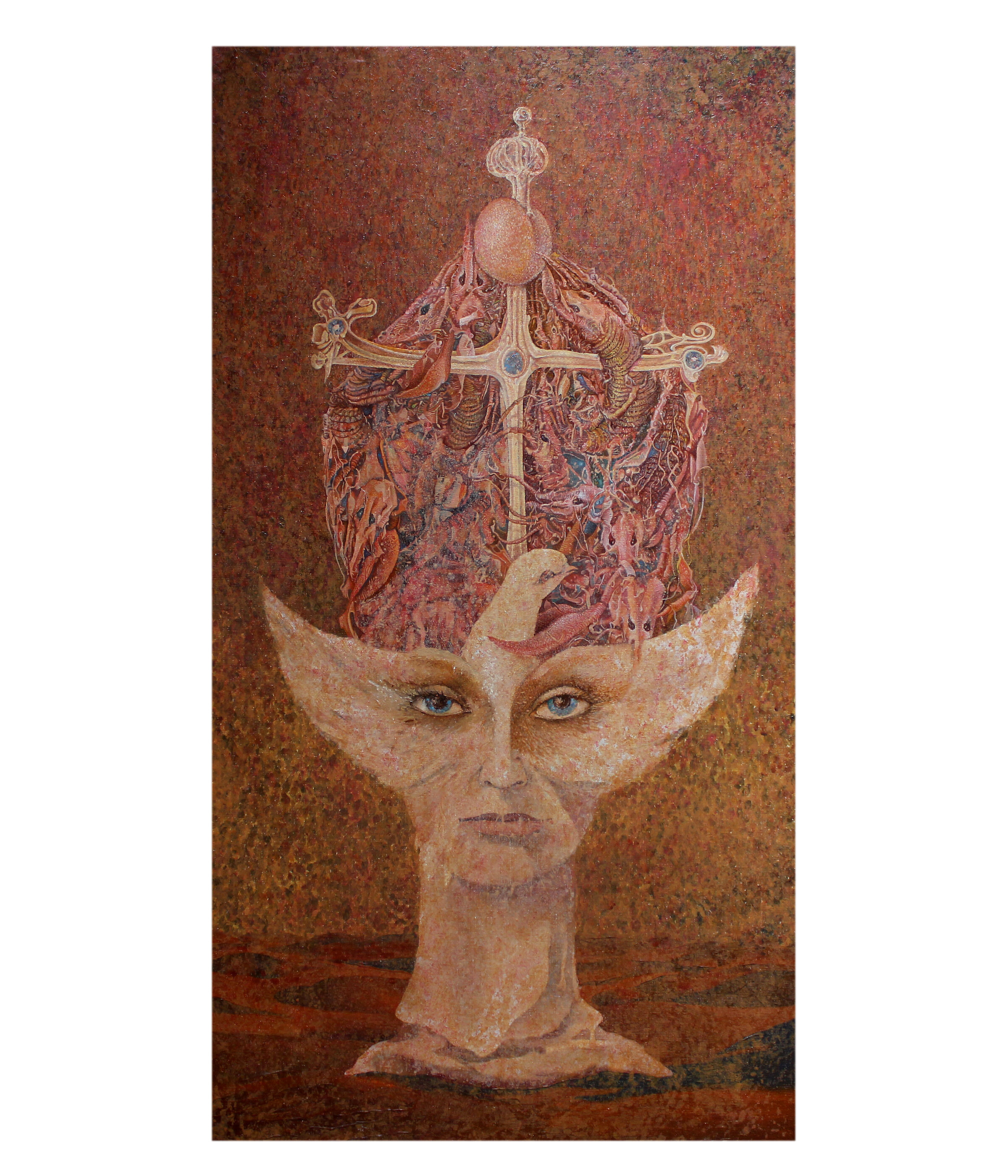Helmut Leherb

Helmut Leherb, Taubenpapst, 1970
Oil on canvas
76 x 42 cm, frame: 83.5 x 49.5 cm
Leherb estate, Vienna
Helmut Leherb (originally Leherbauer) was an active member of the Fantastic Realists in both the early years and when they achieved wider recognition. He was a founder member of the Art Club, and he studied under its president Albert Paris Gütersloh. Together with Rudolf Hausner, Wolfgang Hutter, and Anton Lehmden, Leherb participated in the exhibition at the Belvedere in 1959, the first large breakthrough in the reception of the Fantastic Realists. This exhibition was not intended to present a particular genre or “-ism” in painting, but rather just to showcase figurative painting from Vienna. In the following years and subsequent large exhibitions (such as the show in Hanover designed by Wieland Schmied in 1965) Leherb was no longer included. There are several reasons for this. On the one hand, the artist turned increasingly to surrealism and thus away from other trends, and there were also personal differences between Leherb and the other artists at the time of the Belvedere exhibition.
Art critic Johann Muschik describes the state of affairs as follows, recalling one of his own articles: “This article is one of several that I wrote as part of a campaign in 1959. The aim was to pave the way for an exhibition of the four painters in the Belvedere, the Austrian national gallery. This exhibition was planned for the fall of that year, and was then held from December 1959 to January 1960. It was initiated by Leherb, an unknown artist at the time, with the help of Hutter. Leherb had promised to also place the exhibition in the Petit Palais in Paris, but that never came about. Brauer had been living abroad since 1950 and came to Vienna as a visitor. Fuchs was not invited, due to differences with the leading painters.”1
This far from harmonious picture was then made even worse by Ernst Fuchs holding a kind of counter exhibition in his own gallery, in which Lehmden took part as the only artist who was also in the Belvedere exhibition. Since then, Leherb had the reputation of being a troublemaker. A further factor was the scandal that Leherb caused with his concept for the Austrian Pavilion in Venice. He was commissioned to design the Austrian contribution to the 32nd Venice Biennale (1964) by the art historian and later MAK director, Wilhelm Mrazek, and the state conserver and secretary of the Art Clubs, Alfred Schmeller. His idea was to present the exterior of the pavilion in a deep blue and to have his own sculptures inside with water falling down on them, and with umbrellas, dolls, and dead pigeons on the walls. The minister of education at the time, Theodor Piffl-Percevic, cancelled Leherb’s commission. Then Leherb made his clever own use of this scandal, even if this problematic episode certainly left its traces.
Leherb’s artistic career continued to flourish, and he became a celebrated name in the Vienna art scene, which he nonetheless abandoned in order to move to Paris. The work Taubenpapst (Pigeon Pope) (1970) was painted during Leherb’s Paris years. This portrait of the head of a creature has a female-looking face in the middle, with the forehead spreading out at the sides in extensive twirls and to the top as the head of a bird, crowned by a Torah with a cross. Around the cross there are pink scraps of an organic nature, some of them like sea creatures. This is probably a portrait of Lotte Profohs, the artist’s partner. The whole picture is very bizarre and disturbing, but also elegant. Leherb’s figures are usually based on members of his family or the artist himself, and today they look like they have come from the depths created by the somewhat younger filmmaker David Cronenberg. It is fitting that Leherb called himself the “dark prince of surrealism” (allegedly using a quote from André Bretons).
- Johann Muschik, Die Wiener Schule des Phantastischen Realismus, Vienna 1974, p. 61.